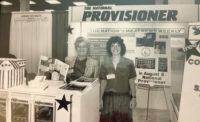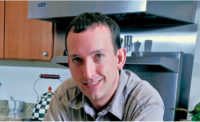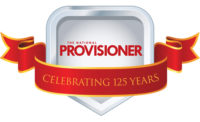When Andy recruited me to relive my tenure as a journalist covering the meat industry for a special issue commemorating The National Provisioner’s 125th anniversary, I knew squeezing an abundance of memories, experiences, joys and sorrows into a few hundred words of copy would be challenging.
Thankfully, I had much upon which to draw, given that the close encounters in my time at NP are indexed in my mental library filled with fulfilling professional accomplishments featuring intriguing people, places and milestones. In addition to my basic work of managing a staff and producing monthly cover stories, I was able to write several biographies featuring major U.S. meat-industry firms and biographical salutes heralding the accomplishments of industry associations. Our commemorative tribute to Rosemary Mucklow was a joy to write because she ranks among the few women of power in the industry.
I was hired in 1992, the same day I interviewed. I brought my vita showing college degrees in journalism and political science, backed by a track record of jobs in the newspaper and consumer-magazine industries. Being hired on the spot, with no prior meat-industry credentials, was a heady experience, to be sure. I had no full understanding of what was before me, but I was eager for a new direction in my career. Having the office within walking distance of my home was a plus, moreover, especially since I was still a bride.
I hadn’t finished setting up my new office before I found myself in Florida on assignment at an AMI meeting, where I encountered three of the industry’s top-rated food-safety and food-science experts: Ranzell “Nick” Nickelson, Gary Smith and Temple Grandin.
Gary’s presentation focused on HACCP (hazard analysis and critical control points), which reached my ears as “ACCIP,” and I was lost. Thankfully, rescue came from a man sitting next to me. His whispered translation enabled me to at least take notes so that I could later bring clarity to the subject. With his national and international reputations in meat science and food safety, Gary’s contributions to our magazine at my invitation in subsequent years were major — and much appreciated.
|
Click here for more exclusive 125th anniversary coverage! |
As I watched Temple working the room, I could tell she was a well-respected heavy hitter in the industry. When I learned her story, including autism and pioneering animal-handling systems, she not only earned my respect, but she went right to hero status. Her story is legend and was even the subject of an HBO documentary. She also answered my call in later years with her expert reports for our main magazine and various magazine supplements.
From the outset, I realized that much would be required of me, given the highly technical nature of the industry. This became increasingly clear as I listened to speaker after speaker at that AMI meeting. I knew I was in over my head until I heard Nick’s presentation. It gave me the clarity I needed. And this grateful student thanked him after the session, as was his due. Moving forward, Nick became a trusted source and industry friend. I looked forward to socializing with him, his wife and lovely young daughter at industry meetings over the years. When I decided NP needed a food-safety expert to contribute regularly, I called on Nick, who found time in his busy schedule to do the job. I relied on his judgment concerning relevant issues that would be useful to our readers. And he always met his deadlines!
Whether they know it or not, thanks to these three, I stayed the course in my trade-publishing pursuits. The payoff was that I was able to gain the information I needed to be able do my job, especially concerning the technical side of the business. My main job involved convincing the industry to open its doors to me and my staff to help us develop an accurate and provocative record of its evolution. This was nearly always easier said than done.
One of my fondest commentaries allowed me to introduce our readers to “Amazing Grace,” the 2-year-old daughter of Eric Siegfried, National Beef Packing sales executive, who posed like a pro for our cover story on her dad’s company. Another is the one I wrote about “Heroes/heroines work on line.” I had much respect for the men and women who handled sharp knives or other dangerous equipment in a very cold and monotonous work environment. Such contributions concerning the food-chain supply system are most admirable in the U.S. labor market.
In the early days, the top 10 leading processors, based on net sales and number of plants and employees, consistently included ConAgra, IBP, Cargill Meat Sector, Tyson Foods, Sara Lee Meats, Smithfield Foods, Hormel Foods Corp., Oscar Mayer Food Division, Gold Kist, Inc., and Perdue Farms, Inc. I am proud that all of these and many more companies carry my byline reports in the NP’s archives. It was a struggle at times; but once an agreement was reached, I encountered a high level of professionalism, cooperation (at times above and beyond, especially during photo shoots), accessibility, openness and graciousness.
After several failed attempts to pry open the gates at Smithfield Foods, I decided I needed an unconventional approach. It began in Pennsylvania on another assignment, when I made the long drive to Virginia for Smithfield’s annual stockholders meeting, hoping to personally plead my case to Joe Luter.
I left Pennsylvania after a plant tour and had to change into presentable attire at a restaurant en route. Joe was dashing off to get a plane after his remarks, when I stepped in front of him and quickly recited my well-practiced points. When I got back to my office I had a wonderful gift waiting for me: a letter inviting me to Smithfield. During the interview, Joe emphasized he only agreed to my request because he liked persistent people.
Likewise, just when I was beginning to believe that I would likely never get into IBP, the door opened wide. I had an engaging time with Bob Peterson and his key executives, although I would have preferred one-on-one interviews rather than a group session. I had been warned that Bob was tough and had no patience for incompetents. No pressure there!
With no Internet and its vast array of information to help, I was forced to conduct my research the old-fashioned way with books, newspaper articles and quizzing anybody I could who knew anything about IBP. Thankfully, NP’s archives were most valuable in that pursuit.
Singling out these two companies does not mean others fell in line like so many dominoes. My theory was that writing about major companies would pave the way to future successes while also proving that an outsider had the right stuff.
To be sure, I started my meat-industry career as a neophyte, but over the years I earned my stripes via continuous education. My classrooms included trade association seminars and other such events, spending time in corporate centers at home and abroad visiting with industry chiefs and their cabinet members, and most importantly, seeing meat, poultry and seafood processing with my own eyes. My most challenging chore was writing those monthly editorials, which served as the gateway into the magazine.
The addition of a daily newspaper called the “Show Daily” gave me a chance to return to newspapering for a time. It began in 1993 at the AMI International Meat Industry Convention & Exposition, when “meat” reporters turned into “beat” reporters with all the attending hustle-and-bustle rush to presstime. It meant early-to-rise and late-to-bed for the team. The papers were delivered to the hotel doors of various conventioneers and handed out to others as they arrived at the convention hall.
One of the most meaningful compliments I received came from industry icon Greg Pietraszek, who had served as senior technical editor more than four decades at NP under its prior owner. I never met him in person, and the day he called to tell me I was doing a good job was a very good day. And I always enjoyed calls from Bob Costello of the Chicago Meat Association.
Among my proudest professional accomplishments as editor-in-chief was the opportunity to share with students, including delivering the keynote address in Louisiana at Southern University’s “Blacks in Agriculture Awareness Symposium” in 1998, and serving as “Professor for a Day” at Texas A&M University at the invitation of John Siebert in 2000. Sharing the stage with Barry Carpenter in Louisiana was a high point.
To be sure, the editor I became is owed in large part to all of this. None of the preceding would have been probative, however, if Harry Stagnito had not acquired the publication and its companion products, and then hired people like me to modernize and improve it. The first magazine came off the presses on April 11, 1891, in New York City. It eventually moved to Chicago and was published “fortnightly,” until it was revamped in 1992 becoming what it is today. The magazine changed so drastically, it was like working on a start-up.
The (new) Provisioner reinvented itself again and again during my tenure. When I passed the baton to Andy Hanacek in 2009, I had served as its constant editor.
I am proud of that. NP








